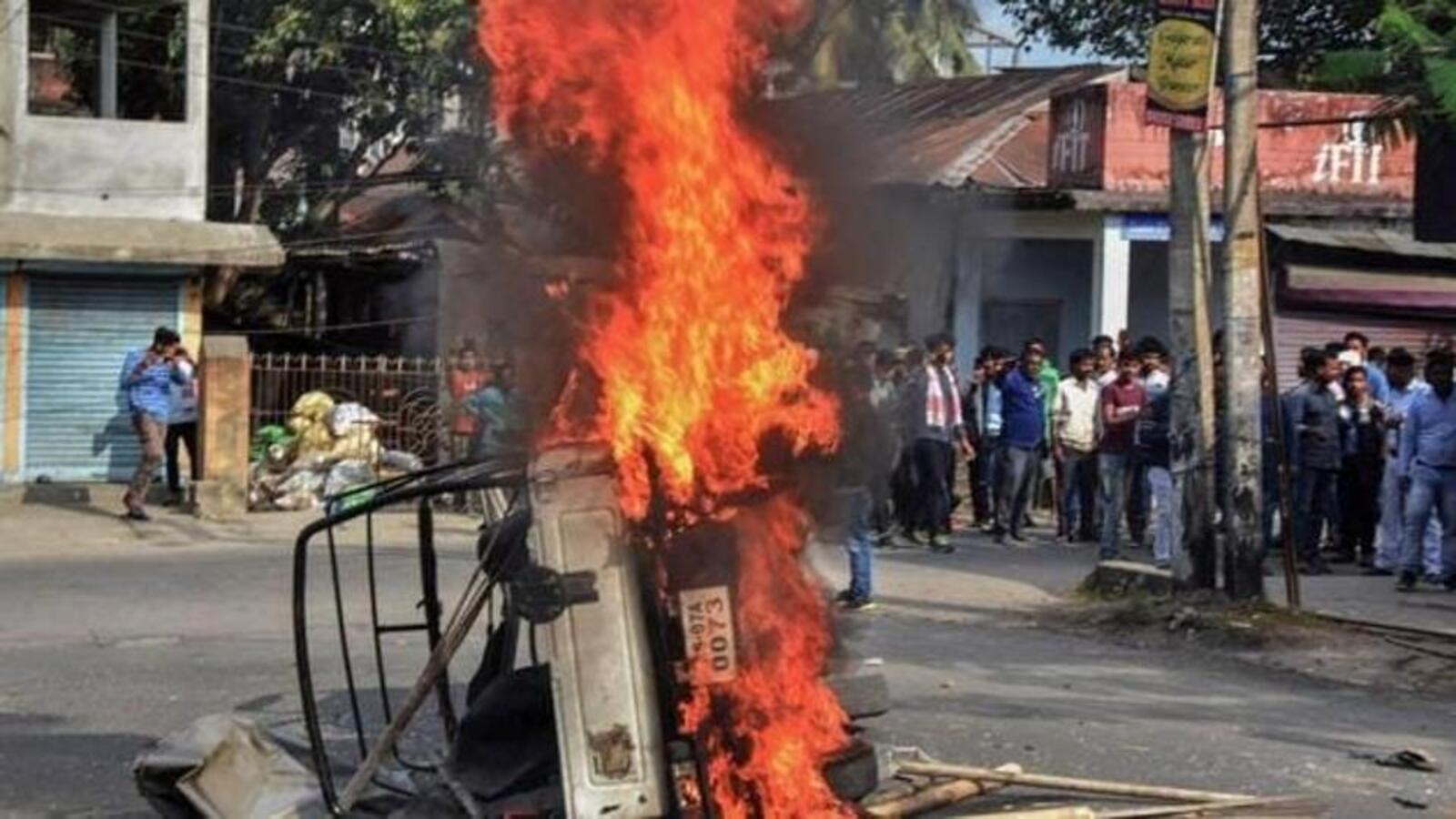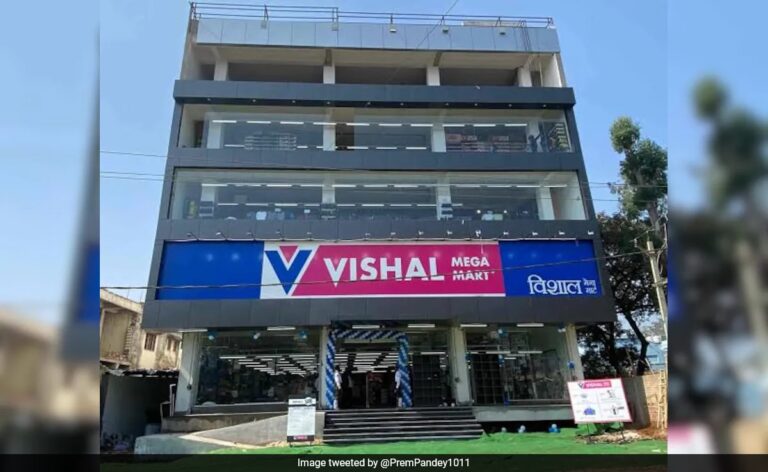Assam’s Dhubri Town Faces ‘Shoot-at-Sight’ Orders Amid Rising Communal Tensions Over Meat Incident
Assam’s Dhubri Faces Tension: Understanding the Shoot-at-Sight Orders Amidst Communal Strife
Guwahati: In a rapidly escalating situation, Assam’s government has resorted to issuing ‘shoot-at-sight’ orders at night in Dhubri, a town facing heightened communal tensions. This decision comes in the wake of an incident that sparked controversy, with allegations surrounding the throwing of meat near a Hindu temple.
The Trigger Event and Its Consequences
The communal discord in Dhubri originated from an inflammatory incident where the head of a cow was reportedly discovered at the Hanuman temple the day after Eid-al-Adha. This act resulted in significant unrest, leading to the deployment of the Rapid Action Force (RAF) and Central Reserve Police Force (CRPF) to maintain law and order.
Assam Chief Minister Himanta Biswa Sarma stated, “I have issued shoot-at-sight orders at night. If someone throws stones and police have doubts about their actions, they will shoot.” The order is a stark reflection of the desperation to control the situation and prevent the violence from spiraling further out of hand.
The state administration has taken additional measures, imposing prohibitory orders in the Dhubri district due to the emergence of mob attacks on roadside vendors and e-rickshaw drivers following the initial incident. Protests erupted amidst this backdrop, showcasing the community’s divisions and the urgency for effective governance.
Government’s Approach to Restoring Peace
In the wake of rising tensions, Chief Minister Sarma emphasized a zero-tolerance policy towards anyone involved in acts that desecrate religious sites. He criticized the act of throwing beef at the Hanuman Mandir as inexcusable and affirmed that those responsible would not escape justice. His stern message was further echoed on social media through his post, highlighting the commitment to expel those seeking to disrupt peace.
The Chief Minister expressed concerns over the recent political developments in Bangladesh, suggesting they have invigorated extremist factions both online and locally. Citing the repeated desecration of the temple with cattle remains, he pointed out that this could lead to attempts to intimidate Hindu residents in the area.
Unpacking the Complexities of Religious and Political Dynamics
-
Communal History: Dhubri has a complex history of communal relations, with incidents like these acting as flashpoints for existing tensions. The delicate balance between Hindu and Muslim communities is frequently jeopardized by provocative events, particularly in light of the political narrative in neighboring Bangladesh.
-
Rising Extremism: The Chief Minister indicated that elements within the community are attempting to “weaponize” cattle, manipulating cultural sensitivities to foster fear and division among residents. The matter at hand goes beyond a simple altercation between communities—it’s a tactic aimed at displacement and polarization that has seen troubling resonance in contemporary society.
- Government Action Plans: The Assam government’s strategy includes an ongoing investigation into illegal cattle procurement activities purportedly linked to the recent violence ahead of Eid. Authorities are scrutinizing reports of a ‘beef mafia’ alleged to have procured thousands of cattle specifically to exacerbate religious divisions during a sensitive time.
Future Outlook and Community Response
As the situation continues to evolve, the local community, as well as authorities, are left grappling with the implications of these events.
-
Protest Outcomes: The protests held after the initial incident showcase the division within the community. How these tensions will unfold in the coming days remains a cause for concern.
-
Call for Peace: Community leaders from both the Hindu and Muslim sides are being urged to step forward to foster dialogue and promote peace. The role of informal mediation through local peace committees may prove crucial.
- Government Reactions: With the central government closely monitoring the situation, the scrutiny of Assam’s handling of communal tensions could further influence local politics.
Conclusion
As Assam grapples with maintaining peace in Dhubri amidst ongoing communal tensions, the government’s shoot-at-sight directive represents a dramatic approach to a complex and multi-layered conflict. With the Adivashis and regional interests at stake, it remains essential for all stakeholders to prioritize dialogue and cooperation, working towards a shared vision of communal harmony rather than division.
This situation reflects not only the challenges facing Dhubri but also the broader communal dynamics prevalent in various regions across India. How the government and community leaders navigate this crisis could set vital precedents for conflict resolution in the future.



![<pre>PayloadTooLargeError: request entity too large<br> at readStream (/var/app/current/node_modules/raw-body/index.js:163:17)<br> at getRawBody (/var/app/current/node_modules/raw-body/index.js:116:12)<br> at read (/var/app/current/node_modules/body-parser/lib/read.js:79:3)<br> at jsonParser (/var/app/current/node_modules/body-parser/lib/types/json.js:138:5)<br> at Layer.handle [as handle_request] (/var/app/current/node_modules/express/lib/router/layer.js:95:5)<br> at trim_prefix (/var/app/current/node_modules/express/lib/router/index.js:328:13)<br> at /var/app/current/node_modules/express/lib/router/index.js:286:9<br> at Function.process_params (/var/app/current/node_modules/express/lib/router/index.js:346:12)<br> at next (/var/app/current/node_modules/express/lib/router/index.js:280:10)<br> at expressInit (/var/app/current/node_modules/express/lib/middleware/init.js:40:5)</pre>](https://ouat.co.in/wp-content/uploads/2025/05/rachel-was-crownedmiss-grand-international-2024-last-year-28213518-16x9_0-768x432.jpg)


